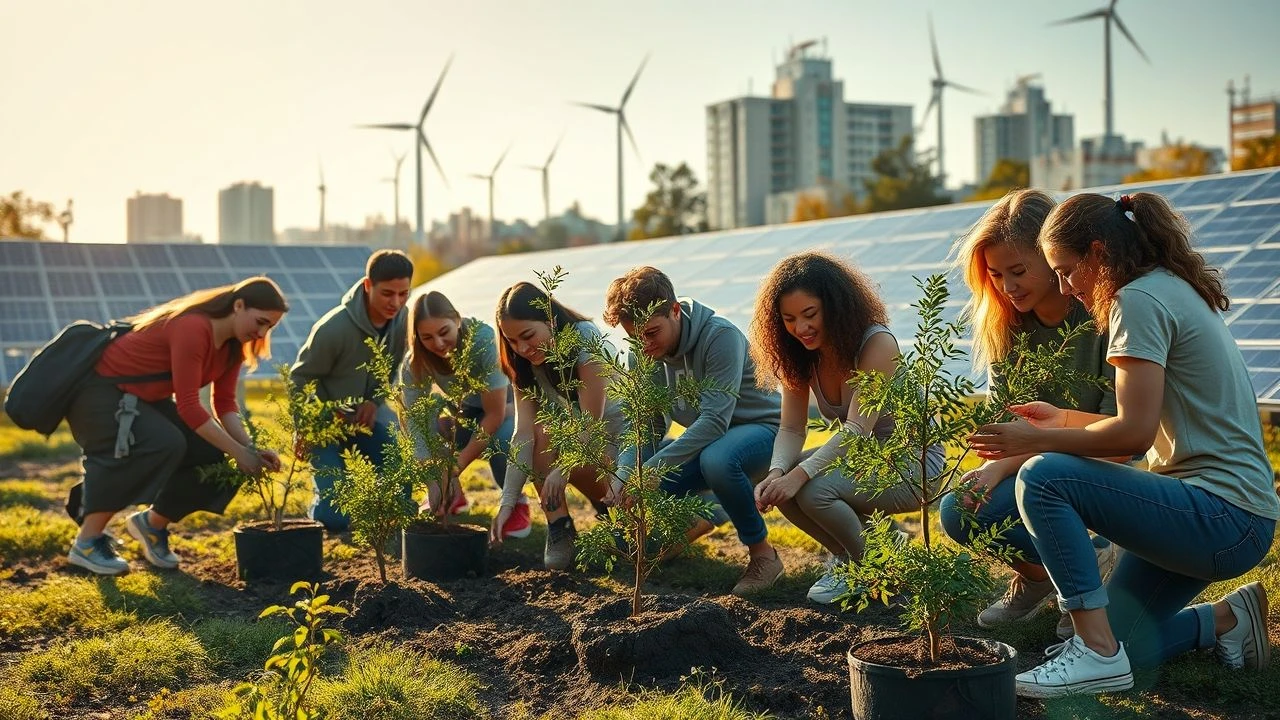
As the world grapples with the climate crisis, individual states are stepping up to the plate with ambitious climate action plans, spearheading the drive towards sustainability. Let's take a gander at what some of the leading states are doing.
California, for example, has long been a frontrunner, targeting carbon neutrality by 2045. Their strategy involves a multi-pronged approach, with significant investments in renewable energy sources such as solar and wind power. According to the California Environmental Protection Agency, the state's goal is to generate 100% clean electricity by 2045.
New York is another key player, with a Climate Leadership and Community Protection Act committing the state to reducing greenhouse gas emissions by 85% below 1990 levels by 2050. Their initiatives include investing heavily in energy efficiency programmes and developing large-scale renewable energy projects. The New York State Energy Research and Development Authority (NYSERDA) reports substantial progress in deploying wind and solar resources.
Massachusetts is also forging ahead with its climate agenda. Their 2050 Decarbonization Roadmap outlines pathways to achieve net-zero emissions by 2050. A crucial part of their strategy involves reducing emissions from the building sector through energy-efficient building codes and promoting electrification.
These state-level climate action plans offer a blueprint for other regions and nations, demonstrating that impactful climate policy can be implemented effectively, driving us closer to a more sustainable future. It's a right proper effort, wouldn't you say?
The shift towards a green economy, spurred by proactive state-level climate policies, presents a mixed bag of economic and social consequences. While there's considerable potential for job creation in burgeoning sectors like renewable energy, energy efficiency, and sustainable agriculture, it's equally crucial to acknowledge the potential disruptions to established industries reliant on fossil fuels.
Consider the economic benefits. Investment in green technologies can stimulate innovation, attract foreign direct investment, and boost overall economic growth. For instance, states pioneering climate policies are seeing a surge in 'green collar' jobs, offering opportunities for workers in manufacturing, installation, and maintenance. Think about the boom in solar panel installers in California or the growth of wind turbine technicians in the Midwest. This shift necessitates re-skilling initiatives to equip the workforce with the skills needed for these new roles. The Environmental Protection Agency (EPA) and various academic studies highlight these opportunities, forecasting significant economic upside from a well-managed transition.
However, the path isn't without its bumps. Existing industries, particularly those tied to fossil fuels, may face decline, leading to job losses and economic hardship in certain regions. A just transition is paramount, ensuring that communities reliant on these industries receive adequate support through retraining programmes, diversification initiatives, and social safety nets. It's not just about creating new jobs; it's about ensuring that no one is left behind. As Professor Emily Carter of Princeton University notes, 'A successful transition requires a holistic approach that addresses both the environmental and social dimensions.'
Social implications are equally critical. Environmental justice must be at the forefront, ensuring that disadvantaged communities, often disproportionately affected by pollution and climate change, benefit from green initiatives. This means targeting investments in clean energy and infrastructure to these areas, creating green jobs within the community, and addressing existing environmental burdens. Policies should be designed to promote equitable access to clean air, water, and energy, thereby reducing health disparities and improving overall quality of life. If climate policies don't actively address environmental injustice, they risk exacerbating existing inequalities.
Ultimately, the economic and social impacts of climate policies depend on careful planning and execution. A well-designed transition can unlock significant economic opportunities, create a more equitable society, and safeguard the environment for future generations. Failure to address the potential challenges, however, could lead to economic disruption and social unrest. It's a complex balancing act, requiring collaboration between government, industry, and communities to ensure a just and sustainable future.
While states are indeed taking charge with novel climate policies, the road to a sustainable future isn't exactly paved with roses. Implementing these ambitious plans presents a fair share of obstacles. Expect pushback from industries that rather like the status quo – those with a vested interest in sticking to fossil fuels. Funding is always a sticking point, as well. Green initiatives often require significant upfront investment, and securing those resources can be a right old challenge, especially when you're juggling other demands on the public purse.
Federal policies have a crucial role to play, either supporting or hindering state efforts. If Westminster gets its act together and provides a framework of incentives and regulations, it'll make life much easier for states forging ahead. And let's not forget the importance of interstate cooperation. Climate change doesn't respect state borders, so a collaborative approach – sharing best practices, coordinating policies – is vital.
What does the future hold, then? Speaking to environmental policy experts, the long-term prospects for state-led climate action appear promising, albeit with a dash of realism. One thing experts keep saying is, state-level actions, though vital, can't exist in a vacuum.
They need to be part of a broader national and global effort. The impact of these 'States Take Charge' initiatives on national and global sustainability hinges on sustained political will, technological innovation, and, crucially, public buy-in. If states can demonstrate that green policies boost the economy and improve people’s lives, they’ll stand a much better chance of leading the way to a greener future for all.

AI in Healthcare: Revolutionizing Patient Care and Navigating Ethical Dilemmas
Rising Mental Health Awareness Demands Stronger Support Systems and Accessible Resources
Revamping America's Roads: Ambitious Plans to Modernize U.S. Transportation Infrastructure Take Center Stage
Navigating the AI Revolution: Why Regulation is Now Essential
AI Ethics: Tech Leaders and Ethicists Clash Over Algorithmic Bias and the Future of Responsible AI Development
Cities Prioritize Public Transportation Improvements for Sustainable and Accessible Urban Living